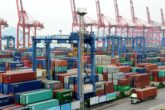April 08, 2020
China’s Economy and COVID-19
On April 2, the CNAS Energy, Economics, and Security (EES) program held a Twitter conversation on the impact of COVID-19 on China’s economic performance, priorities, leverage, and international policies. EES Program Director and Senior Fellow Elizabeth Rosenberg posed several questions to kick off the discussion. Here are some of the top takeaways from the conversation.
What will China’s economic recovery from the COVID-19 closures and quarantines look like? Who will buy the increasing supply of Chinese products while much of the rest of the world has shut down economic activity and physical movement?
Participants noted that recent data on the Chinese economy indicates a very severe recession in January and February, but some stabilization in March as indicators of manufacturing activity and traffic improve. At the same time, economic activity is likely to be very uneven between sectors, and many firms in the service industries are still struggling.
Another point participants made is that the economic response from the Chinese government is still quite subdued. The government has continued to refrain from major stimulus or credit loosening as it did in the global financial crisis a decade ago. Additionally, participants pointed out that the crisis is prompting the Chinese government to further increase the role of state-owned enterprises in the economy, a trend that many other countries are likely to mirror.
Will China have more, or less, economic leverage (independently and in multilateral institutions) in the aftermath of COVID-19? How will this influence its exercise of economic coercion?
There were differing perspectives from participants on whether COVID-19 would increase or decrease Chinese economic leverage. Some participants argued that China’s loans to Belt and Road countries could either increase Chinese leverage, by increasing the importance of Chinese financing, as other defaulting economies struggle to sustain lending or aid. This argument, as one participant noted, has been highlighted by Chinese economic officials, saying that China’s industry has a unique opportunity and role to play as the rest of the world shuts down.
Participants also highlighted how even if China’s economic leverage does not increase or decrease, the Chinese government will still leverage its economic recovery and quicker response to COVID-19 for political gains.
How will COVID-19 influence China’s plans for a central bank digital currency and digital payments?
China, along with many other countries, will likely have increased incentives to release a central bank digital currency (CBDC) as a result of the pandemic. A CBDC has been a policy priority for several years, and the pandemic may increase the speed of China’s work on its release, although the timeline for any rollout of a CBDC is still unclear. As participants noted, a CBDC and contactless payments may help with concerns about viral transmission through physical cash. More importantly, they could support greater ease in monetary policy transmission in difficult economic conditions. Additionally, while China already has widespread adoption of digital payments, the pandemic and possibly accelerated CBDC development may be a harbinger of fintech shifts to come.
How will COVID-19 change China’s plans and capacity for its foreign policy and the Belt and Road Initiative (BRI) in particular?
Participants noted that China’s economic slowdown, which is exacerbated by COVID-19-related closures and decreased demand, will force China to choose what countries and policies, both within and outside of BRI, to prioritize for foreign economic engagement. This could mean a more restrained Chinese approach to investment to reduce international credit risk. However, China is still trying to pursue its BRI policies through its COVID-19 aid response, such as refusing to give aid to Sweden—which it is currently punishing for giving a press award to Chinese dissident Gui Minhai—while giving European countries, such as Spain and Italy critical medical supplies. These three countries are seen by China as target countries, or countries that try to balance between the EU and China to reap more benefits from both, that can be used to split decisionmaking within the EU.
More from CNAS
-
Trump Tariffs: How Will U.S. Plans Reshape the Global Economy?
Donald Trump says he's already decided the tariffs he will impose on countries that export goods to America, including the United Kingdom. Channel 4 hears from Emily Kilcrease...
By Emily Kilcrease
-
Edward Fishman on the Age of Economic Warfare
In the latest episode of the Sanctions Space Podcast, Justine is joined by Edward Fishman, author of Chokepoints: American Power in the Age of Economic Warfare and an adjunct ...
By Edward Fishman
-
The World Has Changed Since Trump’s First Trade War. Other Countries Are Ready to Fight Back.
With so many countries armed and ready, the challenge for Trump will be to use economic weapons to advance U.S. interests without leaving America isolated or ruining the world...
By Edward Fishman
-
Ziemba: China Could Impose Retaliatory Tariffs on U.S.
If tariffs and costs continue to rise, it will not be great for oil demand within the US, that's according to Rachel Ziemba, Adjunct Senior Fellow at the Center for a New Amer...
By Rachel Ziemba




